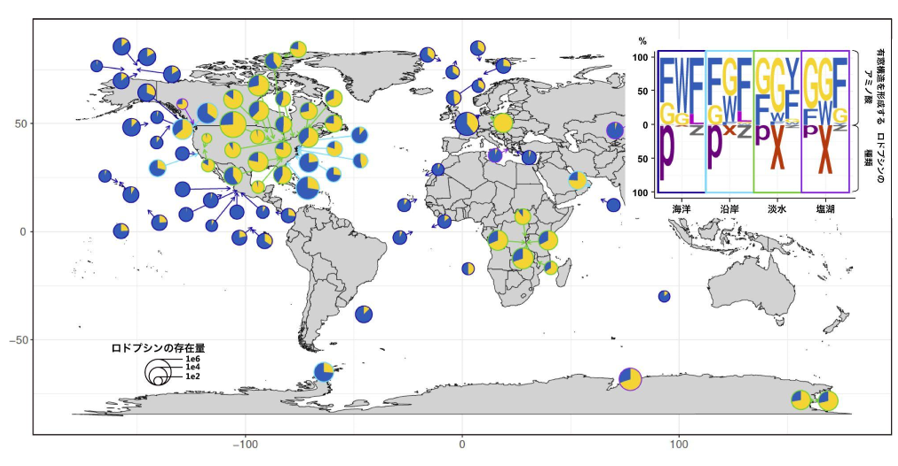DATE2023.03.02 #Press Releases
A New Strategy for Acquiring Light Energy in Rhodopsin-harboring Bacteria Distributed Throughout the Earth
Disclaimer: machine translated by DeepL which may contain errors.
--Discovery of xanthophyll-based focusing antennas--
The University of Tokyo
Nagoya Institute of Technology
Summary of Presentation
Almost all living organisms on the earth use sunlight-derived energy to carry out their life activities. However, only a limited number of organisms are able to convert sunlight into chemical energy that can be used by living organisms. Typical examples are photosynthetic organisms (plants and some microorganisms) that use chlorophyll pigments, but there are also many microorganisms in the oceans and rivers that convert sunlight into chemical energy using photoreceptor proteins (microbial rhodopsins) bound to retinal pigments, in addition to photosynthetic organisms. . In other words, in the aquatic environment, these two types of photoreceptor mechanisms are the windows through which light energy is captured in the ecosystem.
In an international collaboration with research groups in Israel, Spain, and Germany, this research group has discovered that microorganisms inhabiting freshwater lakes and oceans possess rhodopsins that bind xanthophylls (zeaxanthin and lutein), a type of carotenoid pigment, in addition to retinal pigments. In addition, these pigments are also found to have a rhodopsin that binds to the receptor light. Furthermore, these pigments act as light-harvesting antennas that transfer the accepted light energy to the retinal pigments, and rhodopsins with light-harvesting antennas are widely distributed among aquatic microorganisms. This finding suggests that rhodopsin makes full use of light-harvesting antennae in aquatic ecosystems and accepts a greater amount of light energy than previously estimated. In understanding ecosystems, it is an unavoidable task to understand the photoreception efficiency of organisms that receive light energy and to accurately calculate the amount of light energy flowing into ecosystems. The results of this research are expected to lead to a deeper understanding of aquatic ecosystems on a global level.
The research results were published online in the British scientific journal Nature on March 1, 2023 (UK Standard Time).

Figure: Geographic distribution of rhodopsin with light-harvesting antennae
Professor Osamu Nureki and Assistant Professor Wataru Shihoya of Department of Biological Sciences participated in this research.
For more information, please visit the website of Atmosphere and Ocean Research Institute, The University of Tokyo.


